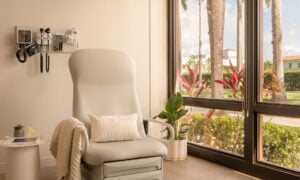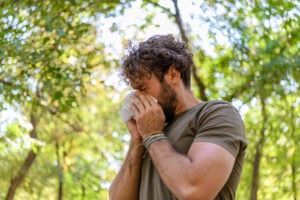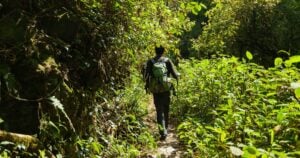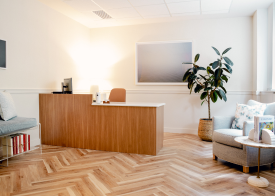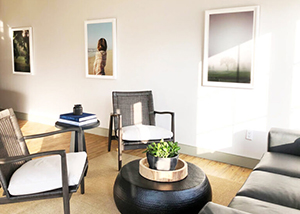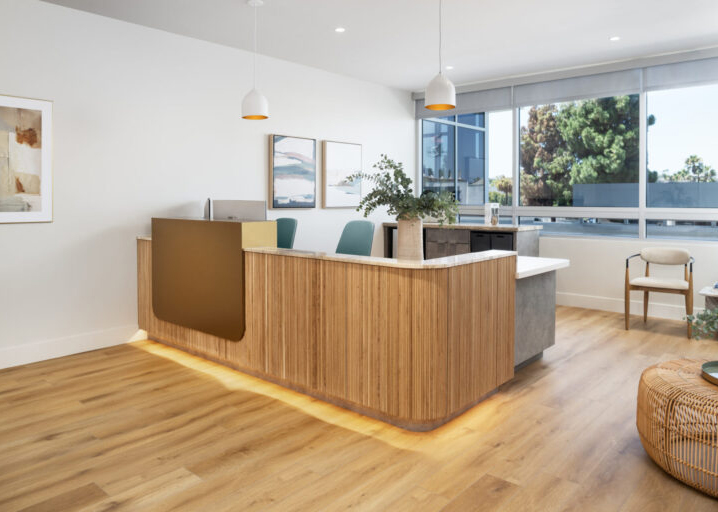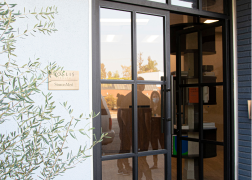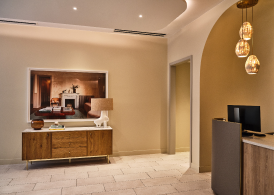When and how did you learn that you had scoliosis?
I learned I had scoliosis around the age of 14. I noticed some asymmetries in my body—my waistline only curved on one side and my right shoulder blade protruded out further than my left. I convinced my mom to take me to a doctor, who confirmed I had scoliosis. At the time, we were told to monitor it. It increased significantly over three years and I was recommended for corrective surgery at age 17.How did scoliosis affect your teenage years? How did you imagine your future?
Scoliosis affected my body confidence, especially because I had already started modeling. The more my scoliosis progressed over the years, the more I could no longer see modeling as a realistic career path. I also felt back pain from sneezing or being on my feet too much. It affected my overall quality of living.What was scoliosis surgery like for you?
The surgery was intense and painful. I recovered in the hospital for about six days and grew an inch taller overnight! I like to emphasize that surgery is the last resort for treatment. I had never been recommended a brace, and looking back, I wish I could have at least tried another method of treatment before surgery. However, I’m grateful I had the surgery because it helped correct my scoliosis, and I have less pain than I did before the surgery.What made you want to be a model? How did scoliosis affect that drive to be a model?
Coming from a small town, I always had aspirations of traveling the world, and I often felt inspired by fashion campaigns in magazines. My friends convinced me to try modeling, so I went to a local model search that I heard about on the radio. I won the competition and signed with an agency at 13, but my scoliosis became more noticeable soon afterward. After undergoing my spinal fusion surgery, I felt even more motivated to pursue modeling, with a new drive to represent others that felt limited by their scoliosis diagnosis.“The more my scoliosis progressed, the more I could no longer see modeling as a realistic career path. But after my spinal fusion surgery, I felt even more motivated to pursue it, with a new drive to represent others that felt limited by their scoliosis diagnosis.”
What are some important things you’ve learned about yourself through chronic illness?
I’ve learned that I can trust my intuition. Believing in myself showed me that I can overcome adversity to achieve my dreams. I’m not defined by scoliosis, but it has given me another sense of purpose that made my modeling journey and career more fulfilling. It’s also a constant reminder to take better care of my body, and I connect with others going through similar struggles. I’ve met some of the most interesting people in the scoliosis community.When and how did you decide to become an advocate for scoliosis?
I always knew I wanted to advocate for scoliosis, but the timing had to be right. Once I felt established enough in my career, I wasn’t concerned about losing opportunities because casting directors and clients focused on imperfections related to my scoliosis, and I felt ready to get involved. I started speaking about it publicly and linked up with the Scoliosis Research Society to travel to Capitol Hill to ask Congress to increase research funding. While I was there, I connected with medical experts in spine care and built long-lasting friendships. I also launched a jewelry line to bring funding and awareness to Curvy Girls Scoliosis’s support group. We teamed up with the group leaders to model our jewelry designs for Teen Vogue and show off back scars and braces. It was vital for me to have girls with scoliosis feel confident and represented in a photoshoot and have a great time together.You’ve done so much incredible work advocating for and using your voice to raise awareness on scoliosis, from Capitol Hill to launching Inégal. Tell us about some of your most memorable experiences.
First of all, thank you! It was important for me to raise awareness for scoliosis to make others diagnosed with it feel less alone and lend my voice to encourage progressing treatment research. From working with the Scoliosis Research Society and Curvy Girls, I feel honored to have been able to connect with an equally passionate scoliosis community. There’s an enormous scope of opportunity to work on. We’ve collaborated on making progress with more sensitive medical terminology. I also teamed up with my friend, spine surgeon Dr. Sariah Khormaee MD, Ph.D., to use social media for an innovative research initiative. We’ve asked those affected by scoliosis to work with us on a project. It’s inspiring to see how many in the community are interested in taking action for it.“People with scoliosis often deal with pain, insecurities, and disruptions to their lifestyles when it affects their ability to do activities they love. Often they’re diagnosed in adolescence, which is a deeply vulnerable time.”
